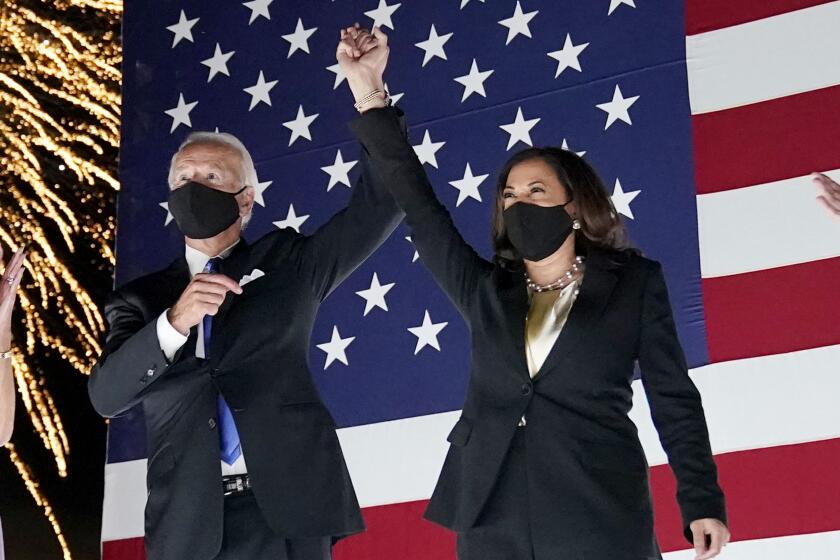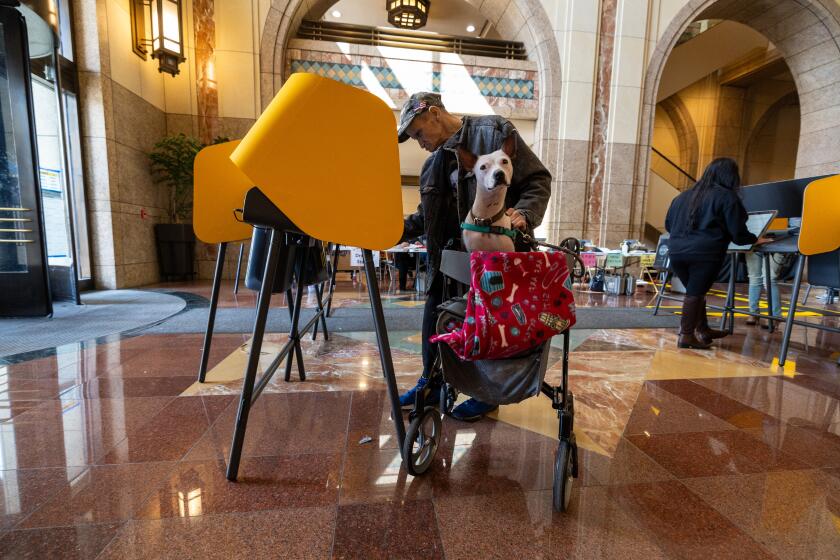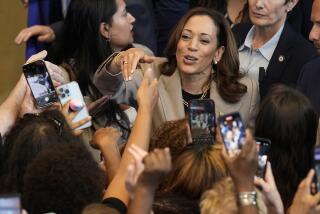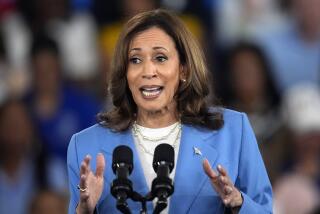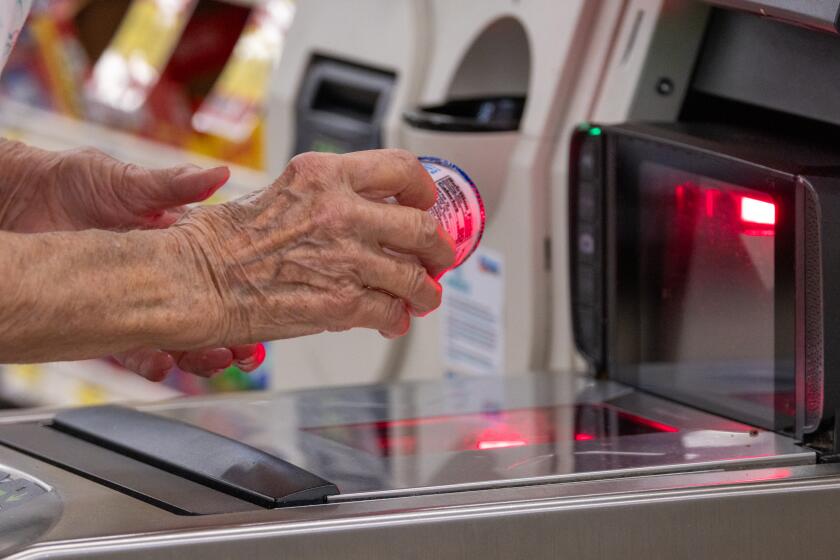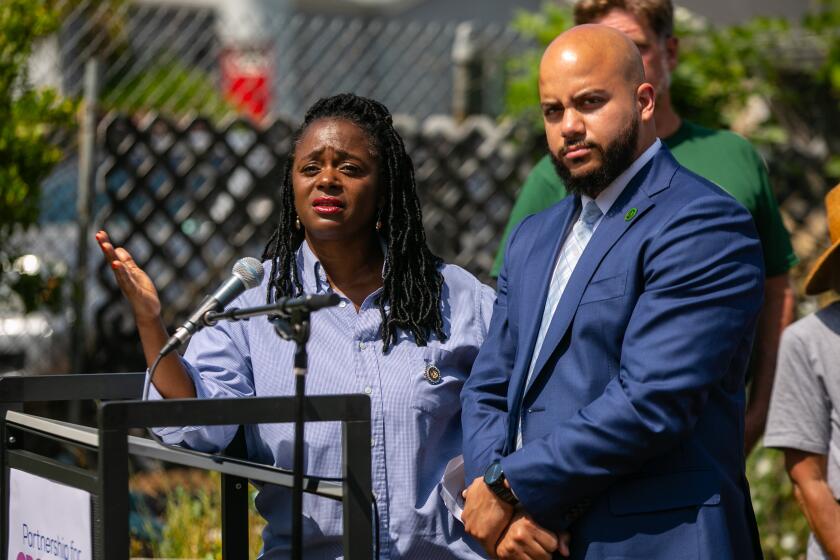Column: Kamala Harris wants to tackle corporate ‘price-gouging.’ Here’s what she’s missing

The best thing about Kamala Harris’ policy debut last week was the backlash.
I don’t mean the political backlash; Harris’ attack on “price-gouging” was probably smart politics. It amplified her campaign’s message that she’s “fighting for the people.” That economists scoff at the tools she would use in that fight probably doesn’t matter much.
Nonetheless, it’s reassuring that most economists roll their eyes at government price controls. Few lessons from economic history are more clear than the futility of that approach, as Robert L. Schuettinger and Eamonn F. Butler chronicled in their 1979 book “Forty Centuries of Wage and Price Controls: How Not to Fight Inflation.”
She hasn’t done a substantial interview since President Biden withdrew from the race. Given Donald Trump’s recent antics, that may be wise, but it isn’t acceptable.
Amid the short-lived debate over private-sector “greed” occasioned by Harris’ proposal, we heard almost nothing about the avarice of the public sector.
By almost any measure, eggs and other staples have become much, much cheaper over the last century. Recent spikes in food prices were just statistical noise in that broader trend with well-known causes: the COVID-19 pandemic, supply chain snarls, avian flu and general inflation.
Meanwhile, goods and services whose actual prices are occluded by government control or interference have become much more expensive. The costs of college tuition, healthcare, housing and other goods and services that are heavily regulated by state and local governments have markedly outpaced inflation, while cars, computers, clothing and other less regulated goods and services have generally become more affordable.
Pulled between political catastrophe and salvation, voters in high numbers are objectively wrong. It’s a huge problem for Biden.
The average inflation-adjusted cost of college tuition has increased 130% since 1990. The cost of K-12 public education has soared too. National healthcare expenditures rose from $435 billion in 1970 to $4.5 trillion in 2022 (in constant 2022 dollars). While the U.S. population grew 64% over that period, healthcare spending increased 934%.
The left rarely describes these increases as price-gouging or attributes them to greed. Sure, insurance companies are often denounced — usually for trying to keep costs down — while pharmaceutical companies are frequently cast as a bogeyman. And for-profit universities occasionally arouse progressive ire. But the affordability crises generated by the public sector more often get different responses: consumer or provider subsidies, or debt cancellation at taxpayer expense.
Taxpayers who want to keep more of their own money are dubbed greedy, while those who want to take it from them are cast as compassionate.
There’s no condemnation of the universities that have spent vast sums on administrators at the expense of professors. Since the 1970s, the number of full-time administrators and other non-teaching professionals in higher education has exploded. Paul Weinstein Jr. of the Progressive Policy Institute found that Caltech, UC San Diego and Duke have more non-faculty employees than students. The ratio of students to faculty at Georgia Tech is 37 to 1, while the ratio of students to non-faculty employees is 11 to 1, according to Weinstein; MIT has almost nine times more non-faculty than faculty employees.
Public K-12 schools are doing worse while spending more. Math, civics and reading scores among 13-year-olds have been declining. Yet all we hear from Democrats is that we need to give the schools more money.
That’s partly because the education sector is a vital part of the Democratic coalition, having served as a political ATM for the party for decades. In every election cycle since 1990, teachers’ unions have given at least 93 cents out of every dollar in political contributions to Democrats. Contributions from higher education and public sector unions generally follow a similar pattern. This doesn’t include additional political activities boosting Democrats.
But I don’t think crass donor capture is the entire explanation — in the same way I don’t think conservatives defend the private sector simply because they are bought and paid for by the rich. Going back at least to the philosopher John Dewey, education has been seen as a kind of secular, democratic, religious rite — and right. Much like another right according to progressives, healthcare, education is regarded as something the state should provide for everyone’s betterment. Concerns about costs are treated as heartlessness or heresy.
I obviously have philosophical disagreements with this worldview, but it’s not a sinister or indefensible perspective. But it is so myopically obsessed with well-intentioned ends that its adherents are blind to means. Denizens of the public and nonprofit sectors have become a kind of new class that thinks it is or should be immune to the market forces that tend to make nearly everything outside the public sector more affordable over time.
The value of accurate prices is that they force necessary trade-offs. Progressives’ approach is to start with the ends — what they think the accurate price (or wage) should be — and reverse-engineer the means to fit them. That hasn’t worked for 40 centuries.
More to Read
A cure for the common opinion
Get thought-provoking perspectives with our weekly newsletter.
You may occasionally receive promotional content from the Los Angeles Times.
